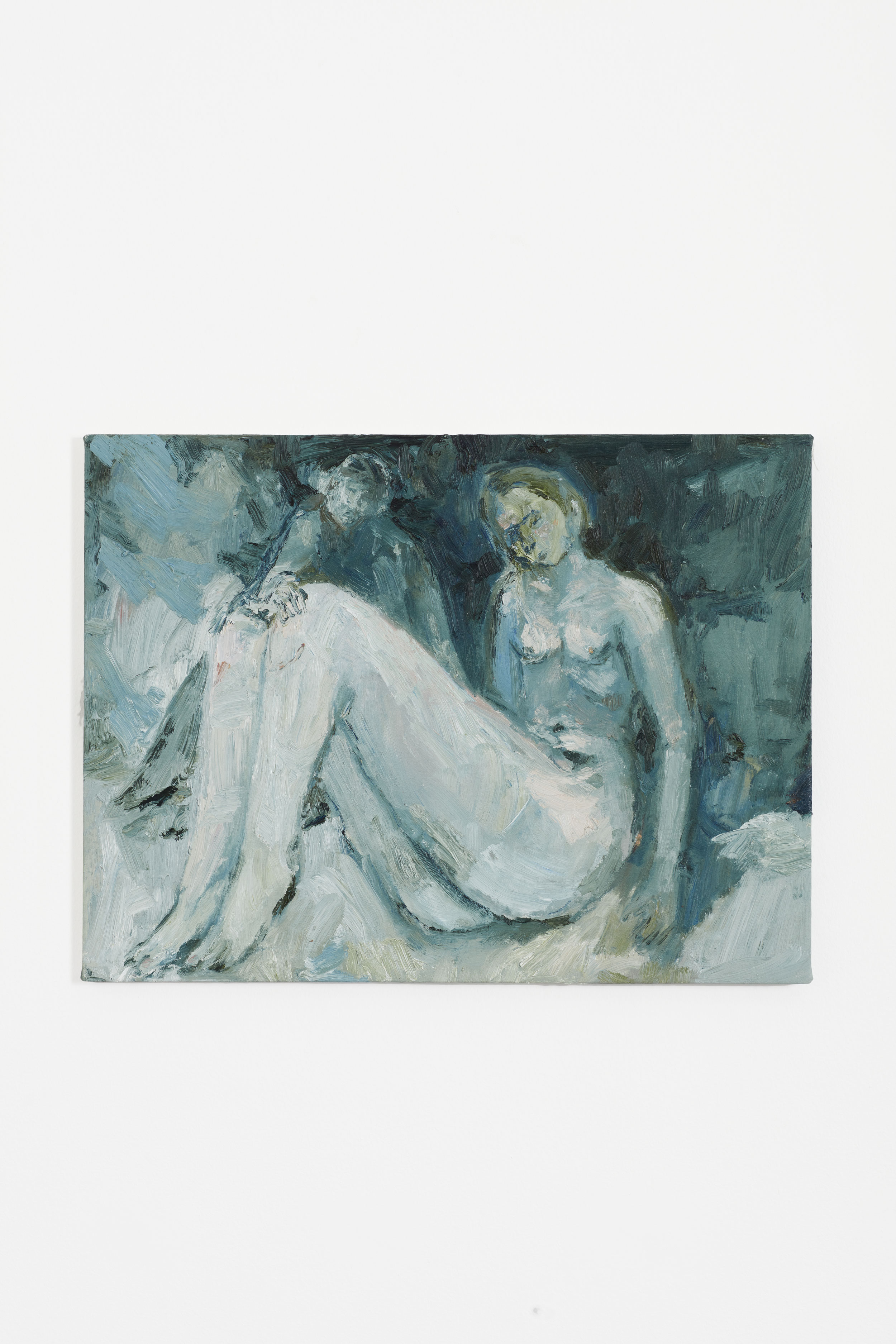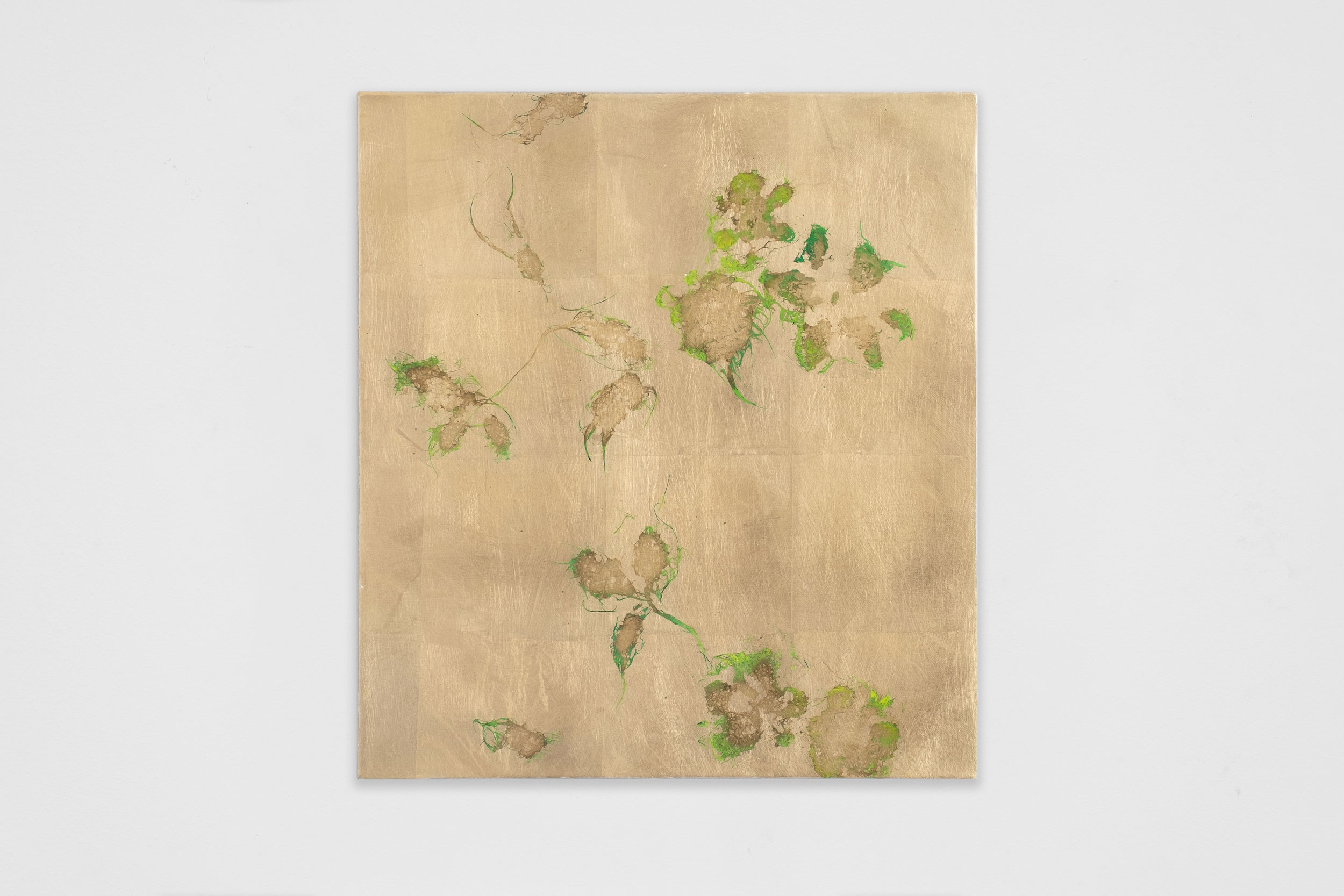Miart 2023
In Collaboration with Whatiftheworld
14 April 2023
-
16 April 2023
Installation views: Miart 2023. RESERVOIR x WITW. Photographer: Matteo Losurdo
For Miart 2023, RESERVOIR and WHATIFTHEWORLD is pleased to share a collaborative group presentation. The booth consists of four contemporary artists from Southern Africa: Mia Chaplin (b.1990, Cape Town), Strauss Louw (b.1992, South Africa), Michele Mathison (b.1977, Zimbabwe) and Pierre Vermeulen (b.1992, South Africa). The presentation has a strong elemental quality, with a focus on materials such as stone, glass, and gold.
Mia Chaplin is a painter and sculptor whose highly expressive works are characterised by their rich impasto surfaces and female centric themes. Consisting of still lifes, figure studies and landscapes, her loose and sensual style of painting – synonymous with that of the impressionists - moves between voyeurism and an intimate interaction with her subjects. Her paintings depict blurry impasto compositions of bodies interwoven, indistinguishable from one another and unashamed. The limbs and torsos of Chaplin’s painted bodies fracture and overlap across the surface; at times represented only by a swatch of colour. Chaplin conflates this loose style with the odalisques of exotic Romanticism and the Italian Renaissance’s Venuses in pudica pose; the latter era being unattainably hyperfeminine and the former, effortlessly masculine. She uses the varying gendered styles of these eras to portray unconventional feminine subjects intertwined in a natural environment within her paintings. Always geographically specific to where he is living/working, Michele Mathison has constructed his latest sculpture, Half Half (2023), from Paarl granite, quarried in the Western Cape in South Africa. The sculpture's solid rectangular column of granite is offset by six steel half-rounds attached to the front, treated with a copper patina - a combination of minimalist aesthetics and simplicity of form that is reminiscent of early 20th-century sculptors such as Arp and Brâncuși. The repetition of the half-rounds against the stone creates a sense of movement and flow, while the angled front of the sculpture gives the impression that it is leaning backwards. The title, Half Half, suggests the genetic makeup of a child, half mother half father, further splitting endlessly along the family tree, and the work could be seen as a meditation on interpersonal relationships, particularly the tension and flow of romantic partnerships. The steel half-rounds represent the energetic, shifting nature of the feminine, while the stone column embodies the idealised masculine, quiet and constant. Visually, the repetition of the steel against the stone is reminiscent of a spine, and the mass of a body supported by the seemingly fragile nature of the skeleton speaks to Mathison’s practice of considering the body and how memory can be stored in different ways. Also presented is Mathison’s Distension series (2018-2023), white wall panels with billowing shapes cast in plaster. Their forms, misleadingly soft, picking up each fold from the woven polypropylene bag they were moulded from - a symbol of the transitory state many Zimbabwean nationals find themselves in, and the same bag used by migrants and refugees globally in different forms. Mathison subtly monumentalises this ubiquitous material, creating a moment of rest. Strauss Louw’s practice could be described as a visual exploration of desire, environment, the gaze and the photograph as an object to possess. In this new series of hand-printed works on mirror, Louw turns the gaze both ways, instinctively capturing his subject in unposed candid moments and presenting the viewer with their own reflection. Working with analogue film photography, Strauss Louw enacts a delicacy in both the craftsmanship of his practice, as well as the guileless male figure that emerges through his images. His medium holds latent poetry that further romanticises each image-object; utilising a 19th century printing process, photographs are exposed through sunlight onto glass or mirror that is coated in a solution of gelatine and potassium bichromate. The gelatin hardens in the areas that have been exposed to light. The unexposed areas of the gelatin remain soft and soluble in water. Some works are finished with 22ct gold leaf on the back of the glass, diffusing the image in glowing layers. Pierre Vermeulen’s practice is rooted in the embodied rituals of meditation. The works are characterised by his use of imitation gold leaf on Belgian linen and sweat for its corrosive relationship - using orchids woven from human hair, Vermeulen has developed a technique to create oxidised imprints on the surface of the gold leaf. The orchid, which Vermeulen sees as an anthropomorphic symbol of desire and fertility, is often seen positioned drifting within the space of the painting, seemingly at random. In his latest work, Vermeulen has changed the placement of the orchid print, pushing it into motion from its floating positioning in space to take on more structured formations. The orchids now advance in a crossing motion, depicting movement that progresses simultaneously inward and outward, left and right, without beginning or end. Vermeulen's use of the orchid as a symbol of desire is particularly poignant - desire as productive - and the movement of the orchids within the space of the painting forms a visual representation of this desiring-productivity. Vermeulen's use of unconventional materials challenges the boundaries between painting, installation and alchemy, inviting us to reconsider our relationship with these mediums.


















